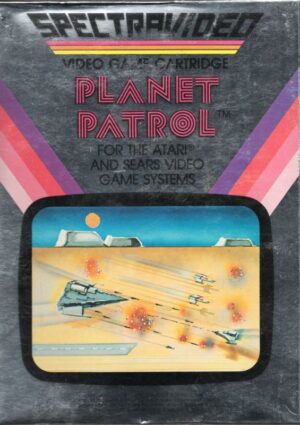Retro Replay Review
Gameplay
Smurfs Save the Day offers a trifecta of mini-games featuring Harmony Smurf, Handy Smurf, and Greedy Smurf, each designed to teach musical memory, sorting skills, and color mixing in a playful environment. In Harmony Smurf’s challenge, the game plays a sequence of four to six notes that children must reproduce by placing falling notes into their correct slots. As players progress to higher levels, the sequences extend and the notes become invisible, requiring keen listening skills to match tones by ear alone.
Handy Smurf’s conveyor-belt sorting task tests shape, size, and color recognition under steadily increasing speed. In Game Mode, children sort the first five items by shape, the next by size, and then by color, repeating the cycle at a faster pace. Toy Mode offers a more relaxed experience with the sorting criteria changing randomly after each item, encouraging experimentation and reinforcing categorization concepts without the pressure of repetition.
Greedy Smurf’s color-mixing puzzle integrates primary colors (blue, red, yellow) with white to create target hues shown in Clumsy Smurf’s glass. Players select spigots to pour liquids, combining colors to match the sample. Game Mode provides a structured progression from simple to complex mixtures, while Toy Mode lets kids freely explore color combinations in a no-fail sandbox. Across all three activities, there’s no time limit or penalty for mistakes, making the gameplay reassuringly child-friendly.
The inclusion of both Game Mode and Toy Mode in each mini-game caters to different learning styles. Game Mode offers clear objectives and a sense of accomplishment as challenges grow, while Toy Mode promotes creativity, experimentation, and confidence-building without strict rules. Together, these modes ensure that Smurfs Save the Day can engage children at varying skill levels and adapt to their individual learning pace.
Graphics
Visually, Smurfs Save the Day embraces the classic, hand-drawn charm of the Smurfs franchise, featuring bright, saturated colors and bold outlines that appeal to young audiences. Each mini-game environment is distinct yet cohesive: the musical stage for Harmony Smurf glows with lively notes, the conveyor belt in Handy Smurf’s segment is rendered with clear, easily distinguishable shapes, and Greedy Smurf’s laboratory exudes playful chemistry vibes with colorful flasks and spigots.
Animations are smooth and purposeful, guiding the player’s attention to interactive elements without overwhelming them. Falling notes gently bounce into place, conveyor-belt items slide predictably, and liquid pours from spigots with satisfying fluidity. Subtle feedback—such as a sparkle when a note is placed correctly or a gentle pop when an object lands in the right bin—reinforces positive outcomes, while wrong choices simply reset without jarring penalties.
The user interface maintains a clean layout: uncomplicated menus, brightly colored buttons, and intuitive icons ensure that children can navigate between Game Mode and Toy Mode with minimal assistance. Text prompts use a friendly, easy-to-read font, and audio cues supplement on-screen instructions, making the experience accessible even to early readers.
Story
While Smurfs Save the Day focuses primarily on educational mini-games rather than a deep narrative, it weaves a light story around the daily adventures of Harmony, Handy, and Greedy Smurf. Each character’s activity is framed as helping the Smurf Village prepare for a big festival—collecting musical notes, sorting supplies, and mixing potions to celebrate together.
This loose storyline provides context without overshadowing the learning objectives. Children feel like they’re part of an overarching Smurf-world mission, lending purpose to each activity. Occasional cutscenes or brief dialogues from Papa Smurf and other villagers gently encourage progression, but never distract from the core tasks.
The narrative simplicity is a strength for the target age group, ensuring focus stays on skill-building. Young players can follow the basic “help your friends” plot, but the emphasis remains on musical patterns, sorting logic, and color theory—an ideal balance for a preschool or early-elementary audience.
Overall Experience
Smurfs Save the Day stands out as a wholesome, educational title that successfully blends beloved franchise characters with foundational learning activities. The absence of timers or harsh penalties cultivates a stress-free environment, allowing children to explore at their own speed and learn through trial and error. Parents and educators will appreciate the clear pedagogical design supporting auditory memory, categorization, and color mixing.
The dual-mode structure—Game Mode for goal-driven challenges and Toy Mode for open-ended play—extends replay value and keeps young learners engaged. As children advance through levels, they develop confidence and competence, while free-play options encourage creativity and independent discovery. The game’s intuitive interface and friendly Smurf-themed visuals further enhance accessibility for early learners.
Ultimately, Smurfs Save the Day delivers an engaging, well-rounded educational experience wrapped in the familiar charm of the Smurf Village. It’s an excellent choice for parents seeking screen time that’s both entertaining and enriching, providing hours of playful learning suitable for preschoolers and early elementary students alike.
 Retro Replay Retro Replay gaming reviews, news, emulation, geek stuff and more!
Retro Replay Retro Replay gaming reviews, news, emulation, geek stuff and more!








Reviews
There are no reviews yet.